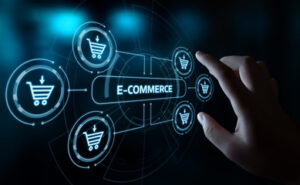Online shopping is a wonderful convenience, but the downsides of eCommerce can also be a real drag. Online shoppers can easily compare prices between competing products, leading to lower profit margins and less quality. Despite the security and protection offered by online payment platforms, some common issues may arise, resulting in a downtime of several minutes. If these problems arise, customers may end up shopping somewhere else. To mitigate these problems, eCommerce sites require a high-speed Internet connection. Search for Is Amazon Automation Legit to learn more about the pros and cons of eCommerce.
 One of the biggest benefits of eCommerce is its ability to tap into new markets. By tapping into opportunities halfway around the globe, a business can become profitable – and a great way to compete. Even small businesses can become global companies. On the other hand, consumers may be more prone to identity theft, credit card fraud, and other issues related to online shopping. Regardless of the pros and cons of eCommerce, it’s important to remember that consumers will always look for the lowest price, and businesses that don’t offer it will likely not win any business.
One of the biggest benefits of eCommerce is its ability to tap into new markets. By tapping into opportunities halfway around the globe, a business can become profitable – and a great way to compete. Even small businesses can become global companies. On the other hand, consumers may be more prone to identity theft, credit card fraud, and other issues related to online shopping. Regardless of the pros and cons of eCommerce, it’s important to remember that consumers will always look for the lowest price, and businesses that don’t offer it will likely not win any business.
A physical store can be impersonal. While eCommerce allows businesses to expand without compromising their physical space, logistics can be an issue as their business grows. Additionally, eCommerce merchants can react quickly to changing consumer preferences and market trends, something that is essential for high-end enterprises. While eCommerce provides these benefits, some consumers still appreciate the personal touch of a physical store. If you want to compete in this space, consider hiring employees and creating Facebook chatbots.
Ecommerce is fast. It allows businesses to respond to consumer demand, and businesses can ship their products worldwide. Businesses can also track traffic, customer journeys, and marketing messages. They can also create promotions and deals on the fly. eCommerce can be extremely profitable if properly executed. However, it can also pose some risks. You may not be able to monitor all aspects of your business as a whole – which can be problematic.
Pros: With the convenience of shopping online, you don’t have to worry about inventory, shipping, or queuing. The advantages outweigh the risks associated with ecommerce. Plus, ecommerce allows you to purchase anything, regardless of location, and even delivers your purchases to you. However, one drawback is that you may have to carry heavy items. It is important to consider all these factors when choosing a business model.
The downside of ecommerce is high competition. Typically, the best niches have a high number of competitors. This means that advertising costs are high because many people are bidding for the same keywords. In addition, ecommerce businesses often face problems with the delivery of products that do not meet the expectations of their customers, particularly in the fashion industry. Nevertheless, this can be overcome by varying your marketing strategy. There are other benefits to ecommerce as well.
For small businesses, ecommerce solutions can be a great way to start selling online. Many of these ecommerce solutions also automate common tasks, such as uploading FAQ pages and implementing automated contact forms. They also support multiple currencies, including the ability to accept credit cards and process payments. Ultimately, you won’t need to handle cash and manage batch transactions. Ultimately, ecommerce is the future of commerce.
A significant advantage of ecommerce is the ability to gather customer information quickly. With physical retailers, most people are hesitant to give out their personal information. Still, ecommerce allows merchants to obtain important details such as name, email address, mailing address, phone number, and even birth date. With this information, ecommerce allows merchants better to serve customers in other countries, such as Europe. If you’re looking to expand your business globally, ecommerce can help you reach a wider audience and boost profits.
Traditional eCommerce comes with a predefined experience, which leaves little room for customization and personalization. On the other hand, headless platforms allow you to design your site in any way you see fit. For example, you can choose a design that features the products and the prices of products. As a result, headless platforms give developers full control of the look and feel of the platform, while ecommerce-specific platforms offer flexibility and customization.